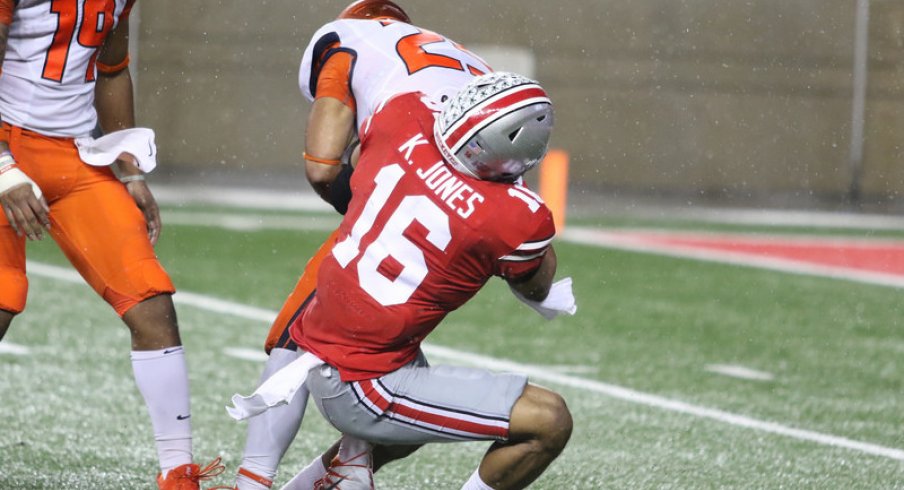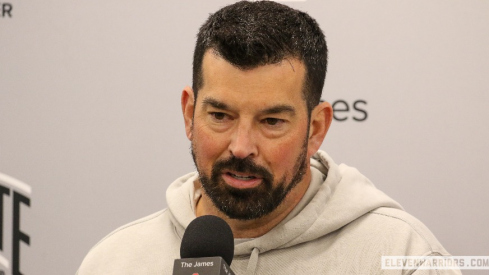We desire to play the game as tough as it is meant to be played, while also making the game safer."
In the spring of 2014, fresh off a Super Bowl victory over the Denver Broncos, Seattle Seahawks coach Pete Carroll made waves in the coaching world by releasing an instructional video that showcased rugby-style tackling methods. While many coaches had been exploring these techniques, which place an emphasis on making contact with the shoulder instead of leading with the facemask, Carroll’s outspoken embrace of the methods surprised many, given his defense’s physical reputation.
Carroll stated his intentions near the beginning of the video, proclaiming "the basis of our passion in this video is to maintain the physical integrity of the game while developing safer tackling techniques."
As viewers can quickly see, Carroll outlines the way his players are taught to bring down ball-carriers, using their shoulders to make contact below the waist and stop the runner's momentum. While he makes it clear that his players are still taught to deliver a hit when able, the concept of wrapping up – a skill seemingly forgotten in the previous decade in favor of launching to make the most violent contact possible – is emphasized in Carroll’s system.
"I believe that’s how the game was originally played when the guys were wearing leather helmets or the helmets without the face masks," former Seahawks assistant head coach Rocky Seto, the man Carroll credits with developing the technique, told ESPN.com in 2016. "You didn’t want to put your nose right into someone’s chest or knee. You’re going to get hurt. So that’s just what the rugby guys do, as well. They try to get contact with the shoulders. So that’s the biggest principle."
With multiple Super Bowl appearances and countless Pro Bowlers on that side of the ball, Carroll’s credentials couldn’t be questioned. Coaches at every level to take a second look at this style of play, given the considerable scrutiny placed on concussions and player safety that remains to this day. Two of those coaches were Urban Meyer and his new defensive coordinator, Chris Ash.
As reported by Jon Solomon of CBS Sports,
Urban Meyer wanted nothing to do with rugby-style tackling at Ohio State. The idea of defenders using their shoulders to tackle, changing target points on a ball carrier and emphasizing wrapping up around the legs wasn’t an easy sell to Meyer. Like so many coaches, Meyer had been taught that tacklers should force their heads across the chest of a ball carrier -- the “head across the bow” model that represented Tackling 101 for so long.
But Ohio State defensive coordinator Chris Ash pushed to change techniques after the 2013 season. Ash watched Seattle Seahawks coach Pete Carroll’s video of the Hawk Tackle, which sells the rugby tackle as safer for the head and more efficient to bring down ball carriers. Ash studied his past and present defenses and realized many of his players used rugby tackling anyway, not the technique being coached.
The idea of rugby tackling “was one that I fought at first and I said no, we’re not going to do that,” Meyer said. “Chris Ash is very persistent, he’s a very good coach, and (like) good coaches who really believe in something, stayed on me. … I listened. I did as much research as I could and ultimately we jumped in. Tremendous success right out of the get-go. You could see the difference.”
As any defensive coach will tell you, though, teaching Carroll’s system isn’t as easy as it sounds. Players must rep these movements ad nauseam until they become second-nature. The good news, however, is that players can replicate nearly every element of the tackle without pads or helmets, given that they’re no longer required to stick their face in the runner’s numbers to bring them down.
But with countless restrictions placed on practice type and time at the collegiate level, coaches have had to adapt their systems of teaching to match the time spent with their athletes. At Ohio State, the tackling circuit begun by Ash has evolved but largely remains in place under the watchful eye of Greg Schiano and the rest of the defensive staff. While no position group emphasizes these techniques more than the linebackers, every member of the Buckeye defense is well-schooled in the rugby-style methods.
The first place to start is a drill known as ‘Cheek to Cheek,” as players get comfortable wrapping up just above the knees and placing the side of their helmet on the other cheek of their opponent.
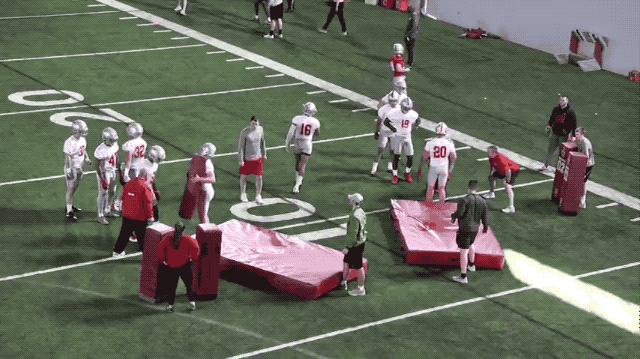
Not every takedown will be that clean, however, especially when chasing a runner down the sideline. For this scenario, the Buckeyes employ a ‘Wrap and Roll’ drill that asks the players to just that to a player streaking down the boundary, replacing the ball-carrier with a bag.
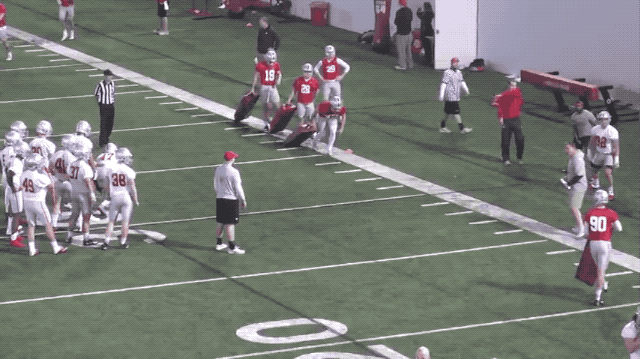
In the past, players may have tried to simply blast a ball-carrier without anywhere to go, making a statement by sending him flying into the benches. But such a play puts the tackler at great risk, as it puts their head in front of a player running full speed and creating a violent collision that can be avoided.
Similarly, the drill trains players to make a play when they aren’t in a position to lay a big hit on the runner. As seen below, Tuf Borland is able to get a hand on the back as he rolls out of bounds, limiting the yardage attained by the offense with minimal impact to both players.
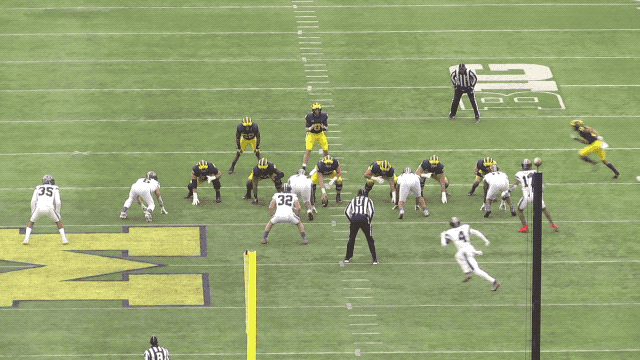
When OSU defenders find themselves chasing a ball-carrier running away, they've got another trick in their arsenal, one we saw last fall when Jordan Fuller saved a touchdown against Nebraska:
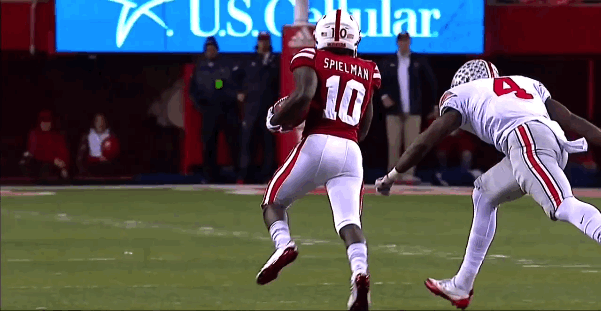
"We rep that in practice every day, so it was just instincts," Fuller said. "We set up a bag and the bag’s moved away from us. I’ve been doing it ever since last year."
Fuller is referring to drill called 'Sweep the ankle,' which you can see below. In it, the player on the right swipes with his hand out wide, a tactic that would be quickly corrected. Instead, he should've extended forward, straight from his body to close the distance, as we see from the player on the left.

But all these methods for finishing the play don't matter if the defender doesn't take the proper path to the ball. The most important piece of the of the rugby tackling puzzle comes before they ever make contact, as they're taught to track the near hip of the runner.
What that means, exactly, is they keep their eye on the runner's hip closest to them, knowing they'll be putting their cheeks on the cheek right behind it. From there, they close the distance on the ball-carrier while maintaining a proper tackling posture with their shoulders square.
To instill this technique, the Buckeye coaches begin forcing their defenders to 'press the hips' of a faux ball-carrier long before they put on the pads. In this game of tag, the supposed runner stays on a straight line, varying their speed while the defender tries to maintain a proper angle toward the near hip and tagging it once in position.

From there, the runner is allowed to change direction as desired, forcing the defender to move laterally and change the hip at which they aim.

Once the pads come on, the players are ready to put all the pieces together, pressing the near hip before going cheek-to-cheek, wrapping above the knees and either driving through the runner or rolling him to the ground.

But as anyone that’s played the game knows, tackling drills rarely replicate the real game itself. Angles change, obstacles emerge, and the speed and confusion of 22 bodies moving at once make the process of one human taking another to the ground far different than how it’s often practiced.
Yet, the shoulder-tackling methods taught in practice regularly show up on Ohio State game film. As seen in the regular season finale against their rivals, outside linebacker Chris Worley (#35) perfectly reads the near hip of the running back before bringing him down with ease thanks to solid contact with his right shoulder and a strong wrap around the thighs.
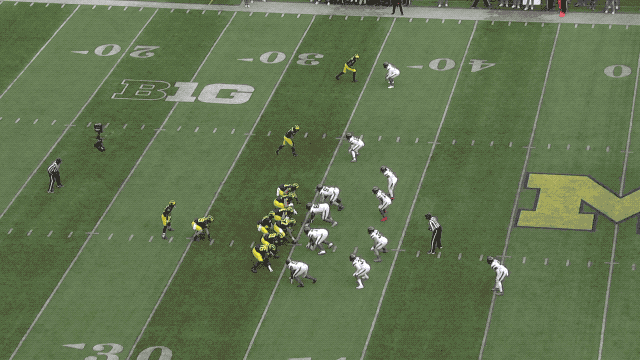
Even when in traffic, the Buckeyes are clearly more used to leading with the shoulder. Despite lining up directly with the runner in a confined space in which generations of tacklers would’ve put their facemask directly on the opponent’s chest plate, Borland (#32) still goes low in the example below and puts his helmet outside the legs of the runner before rolling him to the ground.

Not everyone is a believer in this method, however. One of the greatest tacklers in Ohio State history, Chris Spielman, is skeptical of teaching players to drop their head so low, given the risk of spinal injury. As he told X and O Labs in 2016:
“I get the concept about keeping the head out of the game. I would sit here and argue with anybody about this: when you talk about hitting ball-carriers at the hip or below (as they do in rugby tackling methods), you tend to lower your body to strike and the natural progression is for the head and eyes to go down. Your head may now be at a more vulnerable position. They (rugby style coaches) can say your eyes are up but when you watch it on film you can see if they are tackling at the hip their head or eyes can be down. The head and neck are in a vulnerable position on the football field. Every film I’ve watched, their heads and eyes are down.”
But some of the methods pass the Buckeye great’s test of merit, though, such as the emphasis on wrapping up ball-carriers.
“If rugby tackling has done anything it has brought players back to the fundamental methods of (tacklers) wrapping up and bringing their arms as opposed to running into guys full speed. Backs are too good for that now. I also believe in wrapping up because that’s where turnovers are created.”
Despite the skepticism of one of their own, the Buckeyes have clearly adopted the rugby-style approach without looking back. But while it remains to be seen just how much safer this technique may be in the long run, two Big Ten titles, a national championship, and a defense ranked in the top 10 three times in four seasons show it’s certainly effective.
